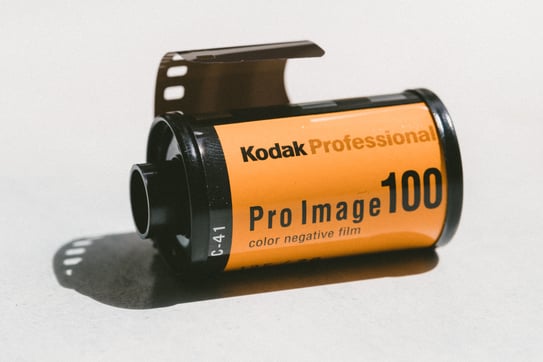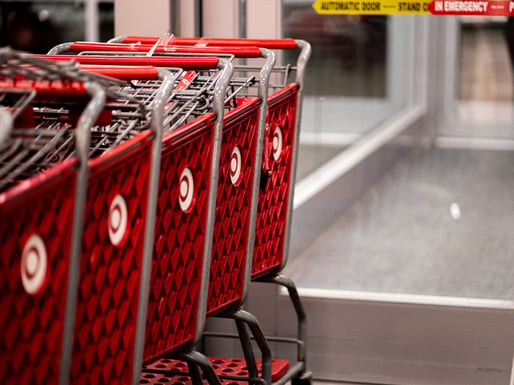When Trust is at Stake: Protecting Your Brand from Reputational Risk
From social media to 24-hour news cycles, a company's reputation can be its greatest asset and biggest liability. The stakes have never been higher, and the need for effective reputational risk management has never been more critical. So, how can companies effectively manage their reputational risk and protect their brand image in this constantly evolving landscape?
What is Reputational Risk?
Reputational risk is the potential harm a business can experience when it does not live up to the expectations of its stakeholders. This risk can impact any business, leading to negative perceptions of the company, irrespective of its industry or size.
Reputational risk is essential for businesses to consider because it can significantly impact their overall market value. In today's economy, where intangible assets such as brand equity, intellectual capital, and goodwill make up 70% to 80% of a company's market value, any damage to a company's reputation can have severe consequences.
Reputational Risk Management VS Crisis Management
Reputational risk management is similar to crisis management, with many often confusing the two to be interchangeable.
A crisis is an unforeseen event that occurs at a particular moment and is often public in nature. It can potentially cause significant harm to a company's finances, revenues, reputation, market position, and service delivery.
Examples of a crisis:
- Uber's toxic workplace culture: In 2017, a former employee published a blog post describing the toxic workplace culture at ride-hailing company Uber, including allegations of sexual harassment and discrimination.
- FIFA’s corruption scandal: In 2015, several high-ranking officials of FIFA, the world governing body for soccer, were arrested on charges of corruption, money laundering, and bribery.
- KFC food hygiene video: In 2014, a video showing employees at a KFC restaurant in China allegedly washing chicken on the floor went viral on social media.
Whereas reputational risks can be strategic or operational in nature.
Strategic risks occur when companies fail to adequately anticipate and adapt to emerging trends and changes in the marketplace, oftentimes pursuing strategies that do not align with the business's objectives. Investing significantly in technologies, systems, and methodologies that risk becoming obsolete due to environmental changes can all pose risks to the organization and contribute to strategic risks.
Strategic risks: Kodak

Kodak was a dominant player in the photography industry, known for pioneering work developing film and creating cameras. However, the company failed to adapt to the digital revolution in the 1990s and 2000s, which led to its eventual bankruptcy in 2012.
Kodak's strategic risk was failing to recognize and respond to market and consumer behavior changes. The company had a dominant position in the film industry but failed to adapt to the emergence of digital photography. As a result, Kodak lost its market position, revenue, and reputation and ultimately filed for bankruptcy.
On the other hand, operational risks can arise from human error, system failures, process failures, external events, regulatory and legal risks, and fraud and theft.
Operational risks: Target

In 2013, Target, a retail giant, experienced a significant data breach that affected 40 million customers. Hackers accessed the company's payment system and stole credit and debit card information and personal data, including names, addresses, and phone numbers.
In addition to facing multiple lawsuits, regulatory fines, and declining sales and stock prices, Target's handling of the data breach was also criticized. They were perceived to be slow to respond and did not adequately inform customers about the extent of the breach.
Target's operational risk was the failure to adequately secure its payment system and protect customer data. The company had not implemented adequate security measures to prevent a data breach and had not properly trained employees to detect and respond to security threats. As a result, Target faced significant financial and reputational damage.
TLDR:Risk management focuses on identifying, evaluating, and reducing the impact of any activity or situation that may cause harm to the organization. On the other hand, crisis management deals with the process of responding to, handling and recovering from unexpected events that can potentially harm the business.
Determinants of Reputational Risk
"It takes 20 years to build a reputation and five minutes to ruin it. If you think about that, you'll do things differently." - Warren Buffett
According to Harvard Business Review, these are the main determinants of reputational risk.
1. The Gap Between Reputation and Reality
A company's reputation is not necessarily a reflection of its true character or behavior; it can be better or worse than reality. However, if a company's reputation is more positive than its actual character, this creates a significant risk. Over time, any failure of the company to meet the expectations set by its reputation will become apparent, leading to a decline in reputation until it aligns more closely with the reality of the company's character and behavior. It is important for companies to understand that reputation is not just about marketing or public relations but rather a reflection of the company's actions and behavior over time.
Case Study:
Abercrombie and Fitch
When there is an “over-positive” gap:
Abercrombie & Fitch marketed itself as a high-end, exclusive retailer catering to the "cool kids," but it faced numerous controversies. In 2013, Abercrombie & Fitch was criticized for discriminatory hiring practices and a refusal to carry larger sizes. Furthermore, the company was accused of promoting a "sexualized" image of young people through its advertising.
Despite these controversies, Abercrombie & Fitch continued to enjoy a positive reputation for some time. However, eventually, the company's true character was revealed, and its reputation declined. The brand's sales dropped, forcing it to rebrand and revamp its image to attract more customers.
Geely
When there is an “underrated” gap:
For example, in the automotive industry, Japanese brands like Toyota and Honda have long been associated with high quality and reliability. At the same time, Chinese automakers have been seen as lagging behind in terms of quality. However, in recent years, Chinese automakers like Geely have made significant strides in improving the quality of their vehicles and are starting to gain recognition for their efforts. However, despite these improvements, many consumers still believe that Chinese products are of a lower quality than Japanese products and can pose a reputational risk for brands.
2. Change in external beliefs and expectations
Stakeholders' expectations of companies can change rapidly, particularly when a leading company alters its policies or behavior. This expectation shift can create reputational risks for firms that fail to keep up with new standards, such as the expectation that companies should minimize pollution.
Case Study
1. Volkswagen
The Volkswagen emissions scandal, also known as "Dieselgate," is a prime example of how rapidly changing external beliefs and expectations can significantly impact a company's reputation. In 2015, it was discovered that Volkswagen had installed software in their diesel engines to cheat on emissions tests. This revelation had far-reaching consequences for the company, including recalls, lawsuits, and fines totaling billions of dollars.
Volkswagen's actions clearly violated widely accepted environmental standards, and the company's attempts to cover up the scandal only worsened the situation. Volkswagen's lack of transparency and failure to meet external expectations on emissions standards ultimately led to a severe blow to its reputation, demonstrating the importance of companies keeping up with changing norms and expectations.
2. Monsanto
Similarly, Monsanto, known as one of the world’s most hated companies and a leading developer of genetically modified crops, met with significant resistance.
Monsanto continued to push for the expansion of GM crops in Europe despite European consumers and environmental groups voicing concerns about the safety of GM foods. This caused a series of intense public backlash, resulting in the EU imposing stricter regulations on the use of GM crops.
Monsanto's failure to anticipate the European consumers' deep concerns about genetically modified foods and to address these concerns effectively led to a loss of trust and credibility. The company's reputation was further damaged when it was revealed that it had used controversial tactics to defend its products and discredit its critics, including hiring a public relations firm to produce false reports and spread disinformation about its opponents.
The backlash against Monsanto's genetically modified crops ultimately led to a decline in the company's profits and a shift in public opinion against using GM crops. Bayer has since acquired Monsanto, but its environmental and ethical controversies legacy continues to affect its reputation and public perception.
Managing Reputational Risk
"Your brand is what people say about you when you're not in the room." - Jeff Bezos
So how can you and your brand protect yourself from reputational risks?
With the rise of social media and the constant stream of online content, companies can no longer rely on traditional reputation management methods alone. Instead, they need to be constantly monitoring what people are saying about their brand and products and taking proactive steps to address any negative feedback through social listening.
Social listening has modernized how companies assess their reputation by providing a way to monitor and analyze what people say about them on social media, forums, blogs, and other online platforms. Social listening can also help companies identify emerging trends and changes in consumer behavior that may impact their reputation in the future, allowing them to proactively manage these risks. By analyzing and evaluating changing beliefs and expectations, companies can proactively manage their reputation and avoid being caught off guard by negative feedback.
By embracing modern tools like social listening and strategic media intelligence, companies can stay on top of their reputation, address any concerns, maintain a positive brand image, and "be in the room."

